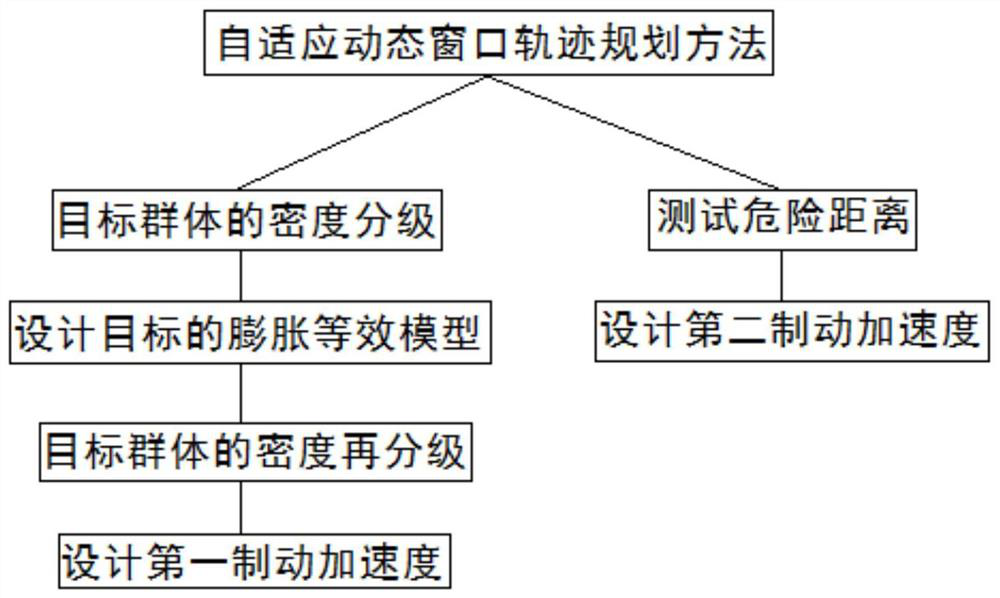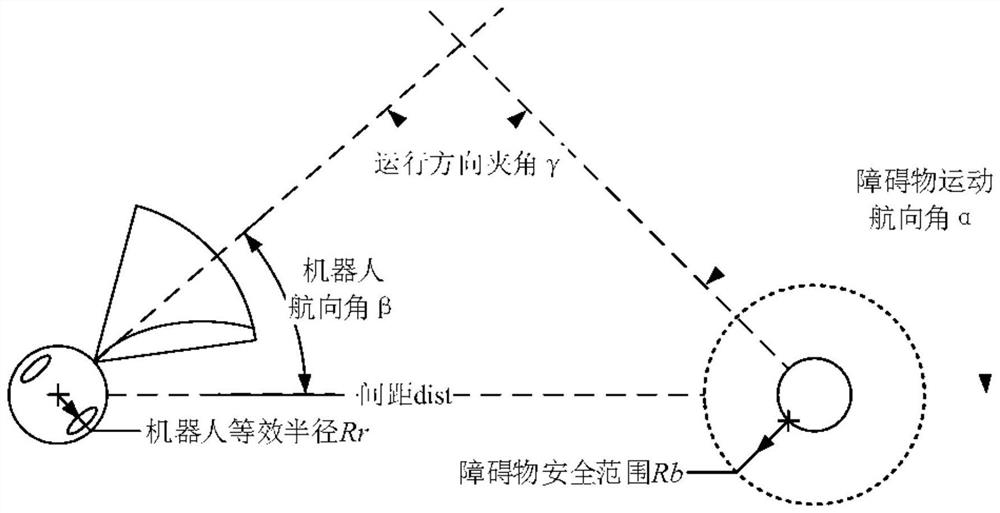Self-adaptive dynamic window trajectory planning method for manned robot
A technology of dynamic window and trajectory planning, which is applied in the direction of motor vehicles, instruments, non-electric variable control, etc., and can solve problems such as the inability to meet the human-machine coexistence environment
- Summary
- Abstract
- Description
- Claims
- Application Information
AI Technical Summary
Problems solved by technology
Method used
Image
Examples
Embodiment 1
[0140] Example 1: Simulation analysis of trajectory planning under different density levels of obstacles.
[0141] The obstacles in the human-machine coexistence environment are mainly pedestrians. When the crowd is relatively loose, the pedestrians can move freely without contact, and the pedestrian speed can be guaranteed at a normal level; There is a risk of mutual contact, and the flow rate of the crowd will be relatively reduced; when the crowd is loose, the manned robot can easily pass through the obstacle group during the operation; when the crowd density increases until the crowd is crowded, individual pedestrians When there is contact between robots, the robot cannot pass through the crowd, and needs to go around or even stop and wait.
[0142] (1) Planning simulation experiments in a crowded environment:
[0143] When designing the simulation experiment, by increasing the number of individual obstacles, a simulation scene corresponding to a relatively high density o...
Embodiment 2
[0151] Embodiment 2: Simulation analysis of traffic in the scene of sudden obstacles.
[0152] In order to study the planning effect when obstacles emerge, it is set as Figure 12 In the simulation scenario, when the robot runs at full speed to within 0.1m of the obstacle safety range at coordinates (6,6), a static obstacle appears at coordinates (6,6). At this time, according to Formula 13, the robot needs to increase the braking force sharply for emergency braking to ensure no collision. Such as Figure 13 As shown in the middle acceleration value and acceleration root mean square value, the robot can well guarantee the safety of trajectory planning when an obstacle suddenly appears, and the overall acceleration root mean square value at the braking moment reaches 18.53, which can achieve good control motion effect, but will be extremely uncomfortable.
[0153] exist Figure 14 The numerical results of the medium agility factor show that the traditional dynamic window al...
Embodiment 3
[0154] Embodiment 3: Simulation analysis of the scene of sharp turn with obstacles.
[0155] Aiming at the scene where the robot and the obstacle suddenly turn and move in the same direction in the complex human-machine coexistence environment, the following settings are set: Figure 16 In the simulation scene shown, the dotted line with arrows in the figure is the running route of dynamic obstacles, the dotted outline obstacle is the position on the way, the solid outline obstacle is the obstacle position at the end of the simulation, and the trajectory curve is the trajectory planning effect.
[0156] The simulation results show that the self-adaptive dynamic window algorithm can carry out safety planning in the scene of sharp turns with obstacles, and the vehicle acceleration can be modified online according to the actual situation combined with the formula. Temporary discomfort. according to Figure 18 The numerical value of the agility factor shows that the agility of t...
PUM
 Login to View More
Login to View More Abstract
Description
Claims
Application Information
 Login to View More
Login to View More - R&D
- Intellectual Property
- Life Sciences
- Materials
- Tech Scout
- Unparalleled Data Quality
- Higher Quality Content
- 60% Fewer Hallucinations
Browse by: Latest US Patents, China's latest patents, Technical Efficacy Thesaurus, Application Domain, Technology Topic, Popular Technical Reports.
© 2025 PatSnap. All rights reserved.Legal|Privacy policy|Modern Slavery Act Transparency Statement|Sitemap|About US| Contact US: help@patsnap.com



